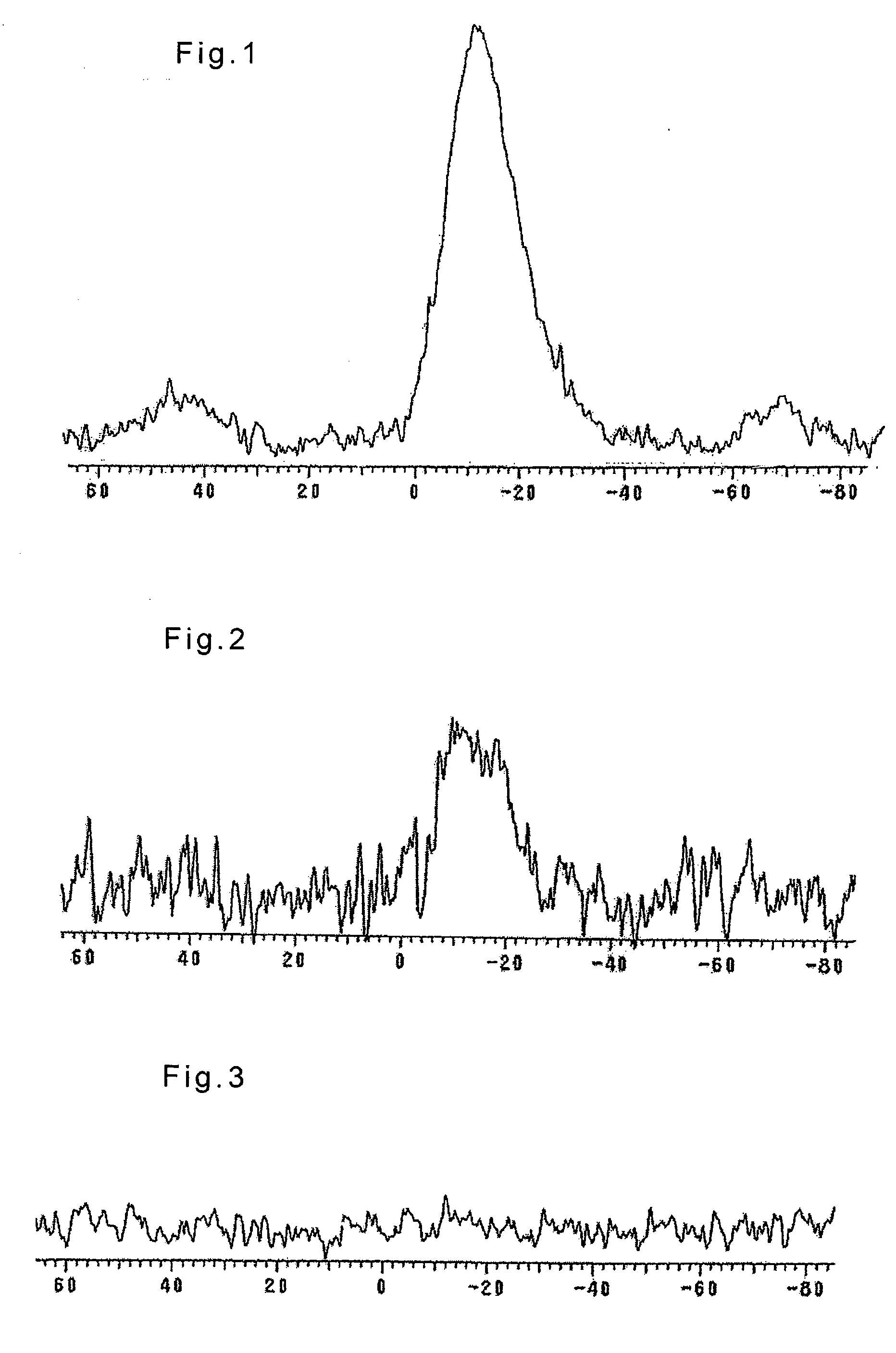Hydrogenation catalyst for hydrocarbon oil and process for hydrogenation using the catalyst
a technology of hydrocarbon oil and catalyst, which is applied in the direction of catalyst activation/preparation, metal/metal-oxide/metal-hydroxide catalyst, physical/chemical process catalyst, etc., which can solve the problems of affecting the use of new exhaust gas treatment systems or catalysts, danger of harming human health, and devices and catalysts being likely to be poisoned or deteriorated
- Summary
- Abstract
- Description
- Claims
- Application Information
AI Technical Summary
Benefits of technology
Problems solved by technology
Method used
Image
Examples
example 1
[0062] To 300 g of an aqueous solution of 5 percent by mass of sodium aluminate was added 0.8 g of sodium silicate No. 3, and the mixture was placed in a vessel kept at a temperature of 65° C. A solution was prepared by adding 0.8 g of phosphoric acid (85% concentration) to 300 g of an aqueous solution of 2.5 percent by mass of aluminum sulfate in a separate vessel kept at a temperature of 65° C. and then added dropwise to the aqueous solution containing sodium aluminate. The addition of the solution was stopped when the mixture reached pH 7.0. The resulting slurry product was filtered out thereby obtaining a cake slurry. The cake slurry was placed in a vessel equipped with a reflux condenser and mixed with 90 ml of distilled water and 3 g of a 27 percent ammonia aqueous solution. The mixture was then heated and stirred at a temperature of 80° C. for 24 hours. The slurry was placed in a kneader and kneaded, heating it at a temperature of 80° C. or higher to remove the moisture, ther...
example 2
[0063] Into an eggplant-type flask were placed 50 g of molded support prepared in accordance with the procedures of Example 1, and then charged a solution containing 14.4 g of molybdenum trioxide, 20.0 g of nickel (II) nitrate hexahydrate, 2.0 g of phosphoric acid (85 percent concentration), and 5.0 g of malic acid, deaerating with a rotary evaporator so that the supports were impregnated with the solution. The impregnated supports were dried at a temperature of 120° C. for one hour and then calcined at a temperature of 550° C. thereby obtaining Catalyst 2. The properties of Catalyst 2 are set forth in Table 1 below.
example 3
[0066] Catalyst 1, Catalyst 2, and the molded supports of these catalysts thereof were each sufficiently ground in an agate mortar and loaded into an NMR probe so as to measure their 31P-CPMAS-NMR using Inova 400 manufactured by Varian, Inc. The measurement was carried out by the CP-MAS method under the conditions wherein the magnetic field was 9.4 tesla, the relaxation time was 10 seconds, the pulse angle of 51.2 degrees, and the elapsed time was 0.04 second. The results are also set forth in Table 1.
[0067] The 31P-CPMAS-NMR spectra of Catalyst 1 and the molded support thereof are shown in FIGS. 1 and 2, respectively.
PUM
| Property | Measurement | Unit |
|---|---|---|
| chemical shift | aaaaa | aaaaa |
| chemical shift | aaaaa | aaaaa |
| chemical shift | aaaaa | aaaaa |
Abstract
Description
Claims
Application Information
 Login to View More
Login to View More - R&D
- Intellectual Property
- Life Sciences
- Materials
- Tech Scout
- Unparalleled Data Quality
- Higher Quality Content
- 60% Fewer Hallucinations
Browse by: Latest US Patents, China's latest patents, Technical Efficacy Thesaurus, Application Domain, Technology Topic, Popular Technical Reports.
© 2025 PatSnap. All rights reserved.Legal|Privacy policy|Modern Slavery Act Transparency Statement|Sitemap|About US| Contact US: help@patsnap.com

